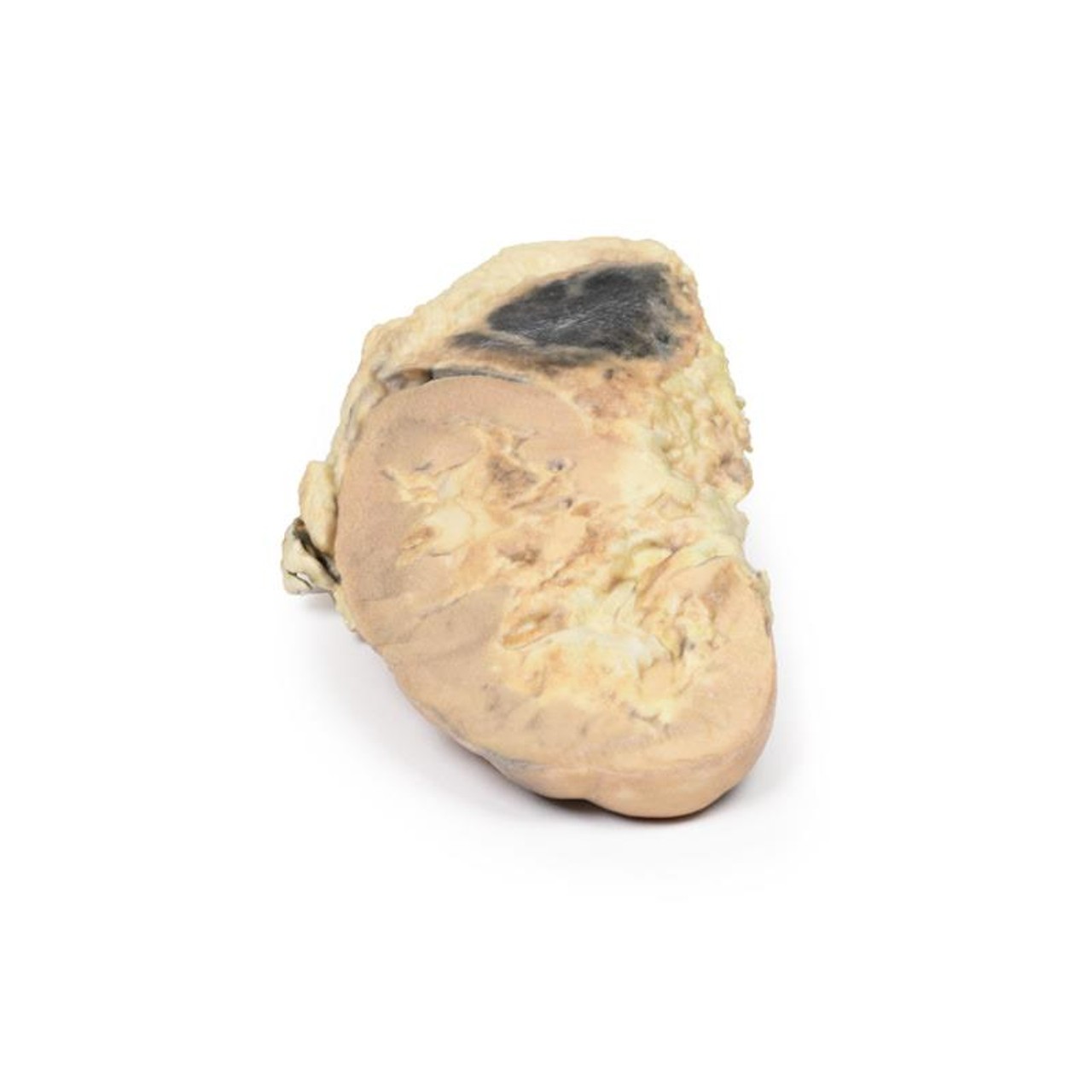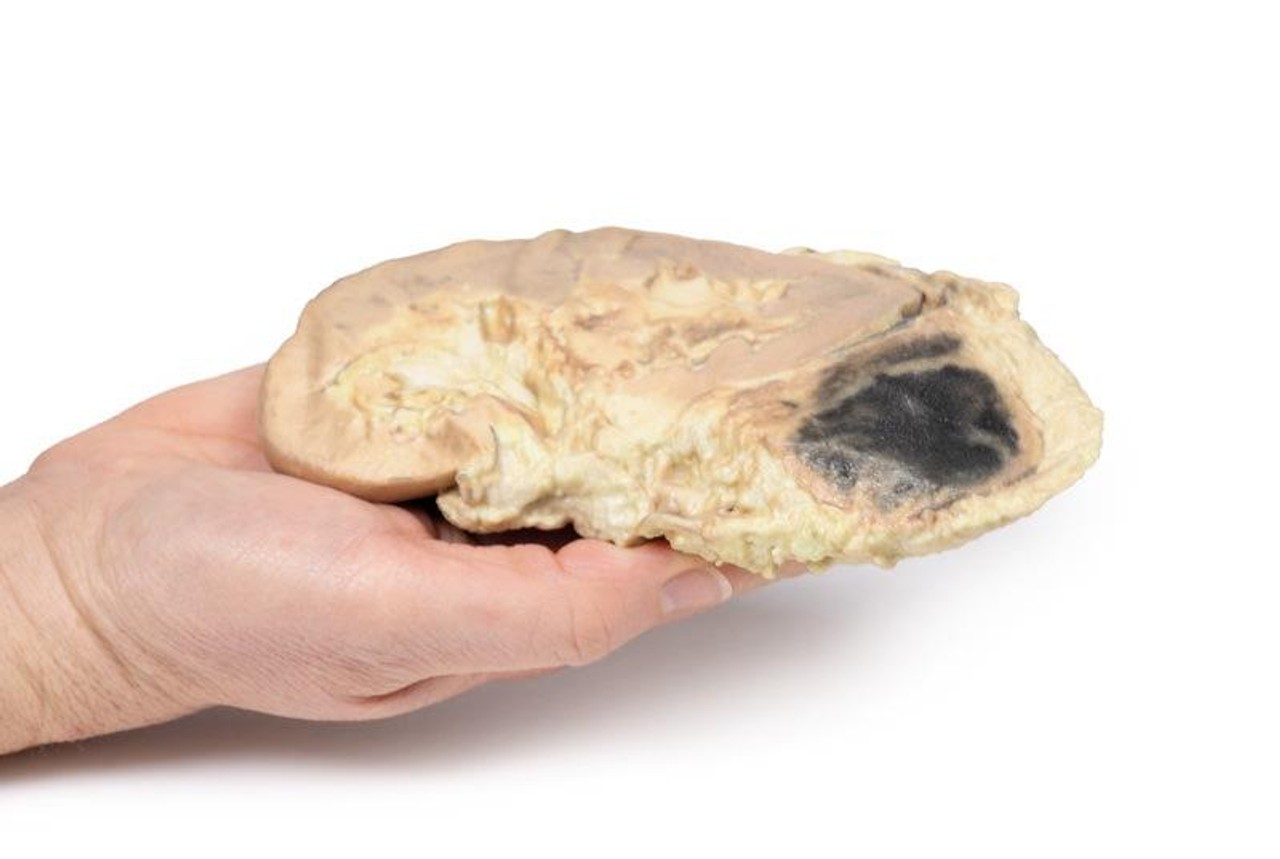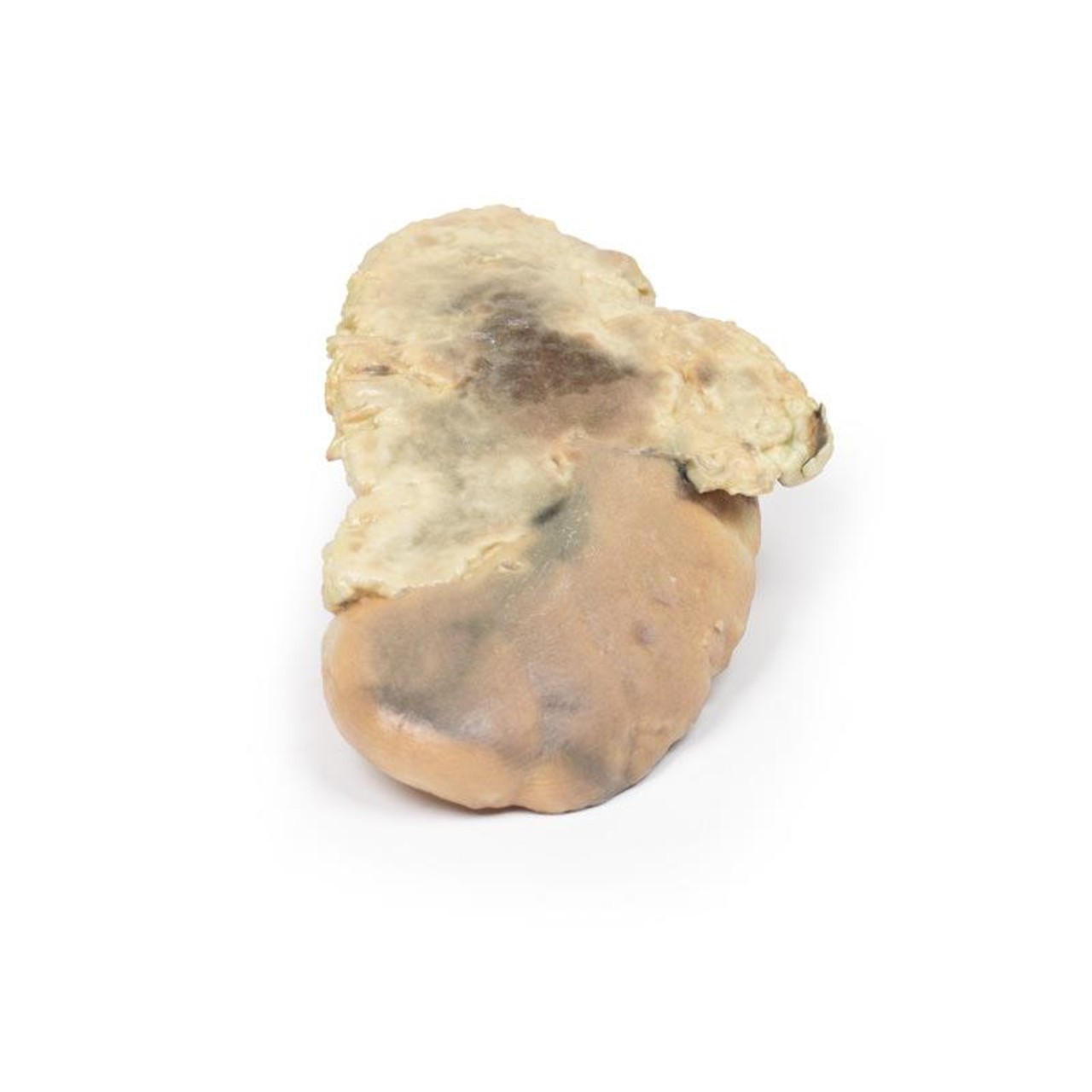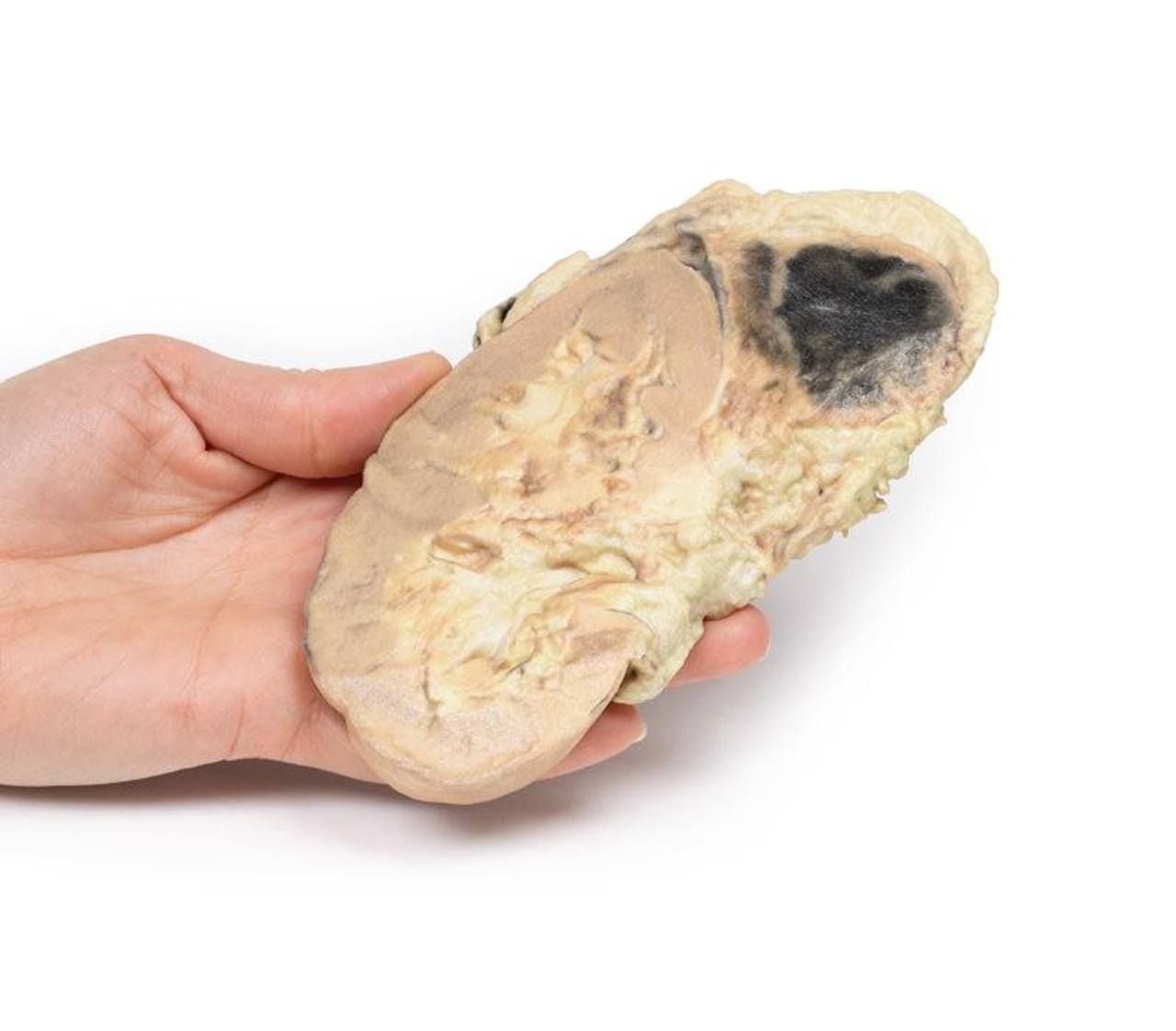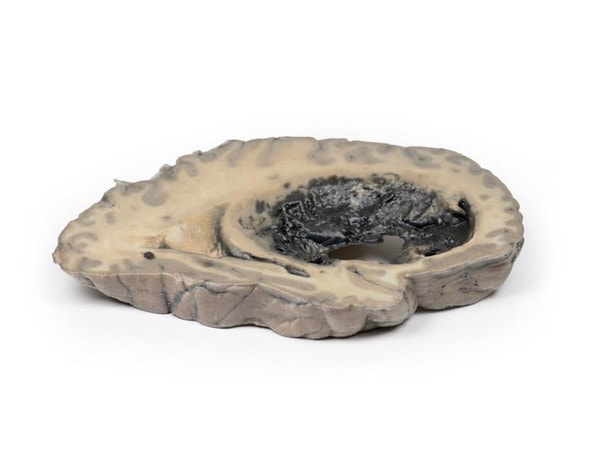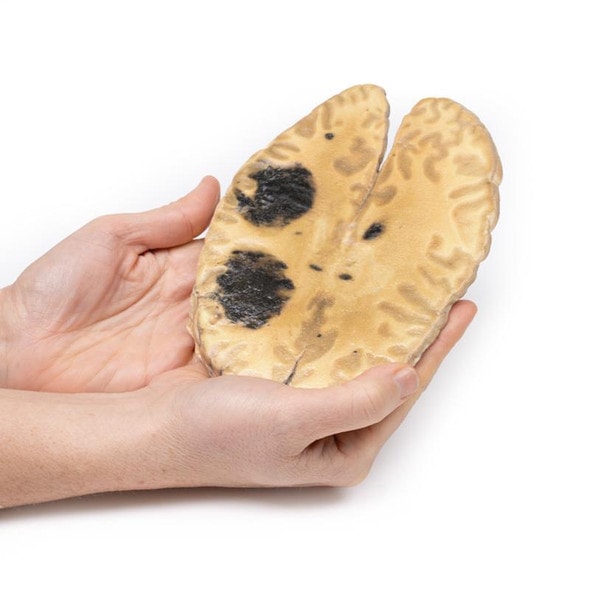- Home
- Anatomy Models
- Urinary System Anatomy Models
- 3D Printed Adrenal Haemorrhage with Waterhouse-Friderichsen Syndrome
Description
Developed from real patient case study specimens, the 3D printed anatomy model pathology series introduces an unmatched level of realism in human anatomy models. Each 3D printed anatomy model is a high-fidelity replica of a human cadaveric specimen, focusing on the key morbidity presentations that led to the deceasement of the patient. With advances in 3D printing materials and techniques, these stories can come to life in an ethical, consistently reproduceable, and easy to handle format. Ideal for the most advanced anatomical and pathological study, and backed by authentic case study details, students, instructors, and experts alike will discover a new level of anatomical study with the 3D printed anatomy model pathology series.
Clinical History
A 77-year old male presented with a 3-day history of abdominal and flank pain with fevers and rigors. He was 2 weeks post-operative from a duodenal ulcer repair surgery. He was hypotensive, hyperkalemic and hyponatremic with a purpuric rash. His blood cultures grew Escherichia coli. He failed to respond to treatment, and died soon after admission due to septic shock.
Pathology
The combined kidney and adrenal gland have been mounted, in order to display the cut surfaces. Extensive hemorrhage has occurred into the adrenal medulla, and there is some extravasation of blood into the periadrenal fat. This is an example of adrenal hemorrhage in the setting of severe septic shock also known as ‘Waterhouse-Friderichsen syndrome.
Further Information
Waterhouse-Friderichsen syndrome is characterized by adrenal hemorrhage cause by overwhelming sepsis leading to hypotensive shock, disseminated intravascular coagulation (DIC) and adrenocortical insufficiency. It most commonly occurs in children and rarely in adults. Neisseria meningitis causes over 80% of cases of adrenal hemorrhage. Other organisms that may cause it include Streptococcus pneumoniae, pseudomonas aeruginosa, Escherichia coli, Klebsiella pneumoniae, Haemophilus influenzae and staphylococci.
The exact cause of the hemorrhage is unclear. It may be due to bacterial seeding of the adrenal vessels, to the DIC or to endothelial dysfunction from inflammatory mediators or bacterial toxins. Adrenal hemorrhages can occur bilaterally. The hemorrhage begins in the medulla and extends outwards to the cortex, and may extend into the periadrenal fat. This leads to adrenal gland failure. Patients present with rapidly progressive septic shock, diffuse purpuric skin rash and adrenal insufficiency crisis. Treatment includes supportive therapy, intravenous antibiotics directed against the cultured organisms, and steroid therapy. The mortality rate is over 50%.
Advantages of 3D Printed Anatomical Models
- 3D printed anatomical models are the most anatomically accurate examples of human anatomy because they are based on real human specimens.
- Avoid the ethical complications and complex handling, storage, and documentation requirements with 3D printed models when compared to human cadaveric specimens.
- 3D printed anatomy models are far less expensive than real human cadaveric specimens.
- Reproducibility and consistency allow for standardization of education and faster availability of models when you need them.
- Customization options are available for specific applications or educational needs. Enlargement, highlighting of specific anatomical structures, cutaway views, and more are just some of the customizations available.
Disadvantages of Human Cadavers
- Access to cadavers can be problematic and ethical complications are hard to avoid. Many countries cannot access cadavers for cultural and religious reasons.
- Human cadavers are costly to procure and require expensive storage facilities and dedicated staff to maintain them. Maintenance of the facility alone is costly.
- The cost to develop a cadaver lab or plastination technique is extremely high. Those funds could purchase hundreds of easy to handle, realistic 3D printed anatomical replicas.
- Wet specimens cannot be used in uncertified labs. Certification is expensive and time-consuming.
- Exposure to preservation fluids and chemicals is known to cause long-term health problems for lab workers and students. 3D printed anatomical replicas are safe to handle without any special equipment.
- Lack of reuse and reproducibility. If a dissection mistake is made, a new specimen has to be used and students have to start all over again.
Disadvantages of Plastinated Specimens
- Like real human cadaveric specimens, plastinated models are extremely expensive.
- Plastinated specimens still require real human samples and pose the same ethical issues as real human cadavers.
- The plastination process is extensive and takes months or longer to complete. 3D printed human anatomical models are available in a fraction of the time.
- Plastinated models, like human cadavers, are one of a kind and can only showcase one presentation of human anatomy.
Advanced 3D Printing Techniques for Superior Results
- Vibrant color offering with 10 million colors
- UV-curable inkjet printing
- High quality 3D printing that can create products that are delicate, extremely precise, and incredibly realistic
- To improve durability of fragile, thin, and delicate arteries, veins or vessels, a clear support material is printed in key areas. This makes the models robust so they can be handled by students easily.

